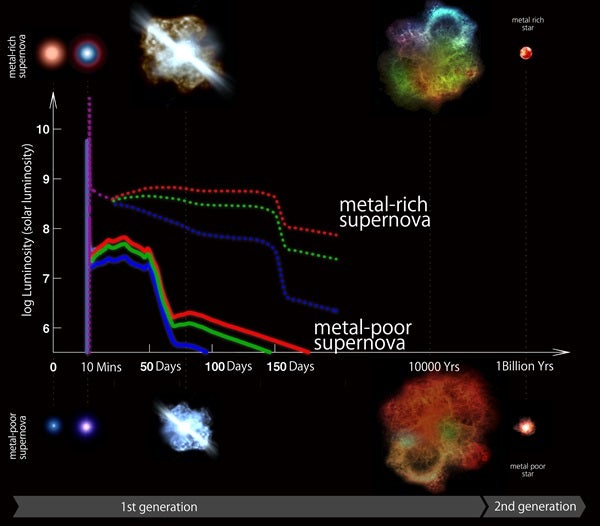Sorry to hear you’re blue, nebula, but don’t worry. There’s a good reason — you probably came from one of the first stars.
About 100 million years after the universe burst to life in the Big Bang, the two existing elements — hydrogen and helium — came together into the first stars, big, cumbersome beasts that lived fast and exploded faster at the end of their lives. From there, new stars and new elements could emerge. But finding this first generation of stars has always been a hard proposition.
Now, researchers believe they’ve found a way to find the remains of this first generation of stars. The first generation of stars are metal poor, due to the lack of heavier elements (often called “metals” in astrophysics.) In a paper published in the Astrophysical Journal, researchers at the Kavli IPMU Project detailed the light curve of low metal stars.
Essentially, those coming from older, metal rich stars had a redder light curve. Those with less metal burned bluer and fainter, and had a short plateau before beginning to fade.
So what does this mean? In part, it will help astronomers perform supernova triage. When an event happens, this will shed a light on progenitor stars, and could help find other “first generation” supernova nebula to understand the mechanisms working there. Instruments like the James Webb Space Telescope will be able to peer on them in unprecedented detail.
It may also help find more ways to hunt for the stars themselves before the supernova by giving specific spectral clues that could help separate them from newer stars. We’ve been inching closer and closer to finding this first generation (and indeed, an upcoming feature in our magazine by Liz Krusei will detail this hunt), but they remain ever elusive. At least now, we may be able to find them when they die — and figure out what happens to their cores afterward, whether it’s a neutron star, a black hole, or a white dwarf.










